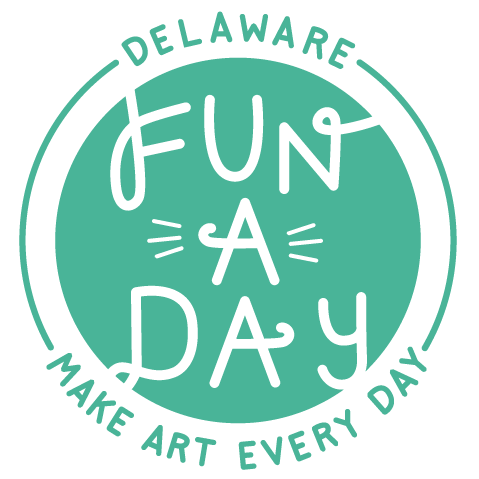Interview by Kati Driscoll
As some of our organizers are also participating artists, we decided to switch things up and turn the lens on ourselves a bit. To kick things off, we're talking with Sheila Master, who is in charge of Events.
Have you always lived in Delaware? If not, what brought you here?
No, but my family moved to Bear, DE when I was six, so I definitely feel like Delaware is home. Although I will admit that before we moved here, one of my mom's co-workers told me that there were a lot of farms in Delaware and I would have to become a farmer when I got here. For whatever reason, this did not sit well with me at all and I was incredibly distraught over the move.
What is your preferred medium?
Photo. Photography stole my heart.
Do you work in other areas, aside from photography?
I occasionally incorporate other art forms, such as, printmaking or writing. But this is always done in conjunction with some sort of photographic imagery.
More than just a photographer, you're also a teacher. What attracted you to teaching and how does it influence your work?
What I absolutely love about teaching is that it provides me with a forum to completely nerd out over photo with other weirdos that love it as much as I do. Photography has given me a way to filter the world around me and a means to communicate my perspective. I predominantly teach high school aged kids and I love providing them with a way to discover their own viewpoint as well. Also, I love eating swedish fish during the critiques.
The way it influences my work is through sheer motivation to keep producing new work myself. When a class is grooving with a project or learning a new photographic technique, I'm energized to do the same.
Your pieces in previous Fun-A-Day shows featured images that told some sort of exploratory narrative - either investigating familiar spaces or, as with last year's piece, examining personal fears. Do you anticipate your work this year will also be about discovery in some way?
I've never tried to make work that gives an answer, I'm so much more interested in the pursuit to gain understanding. So I imagine a similar theme will be prevalent this year as well. With my project last year, I skimmed the surface of facing fears and this year I plan to analyze just one much deeper. Like many other photographers, I like to safely hide behind my camera. It is incredibly uncomfortable for me to be in front of it. So I plan to spend a month being uncomfortable in front of a camera. We will all see how that goes...
What did you enjoy about last year's project? What challenged you?
The entire project challenged me. I felt like it was a solid month of playing truth or dare with myself and never had truth as on option. Every day I had to wake up and come up with another way I could put myself into an uncomfortable situation. I thought there was a good chance I might end up having a nervous breakdown before it was finished. By the time the month was over, it felt normal to search for personal boundaries of mine to attack. It's been a year now and I continue to look for new ways to push myself outside of my comfort zone.
In addition to being a participant, you're also one of the event organizers. Tell us about what your role in Fun-A-Day.
After participating as an artist during the inaugural Fun-A-Day event, I thought the whole thing was so awesome that I wanted to get more involved. This year my role is to focus on details like decoration, food and beverage, admission to the event and organizing volunteers.
I've noticed that you tend to work within a square format (be it Polaroid or Hipstamatic). What draws you to this particular shape?
I like how compact it is as a shape. Composing within a square forces me to be more aware and discerning, to keep what is inside the frame tight.
You also specialize in experimental photography. Can you tell us a little bit more about what that entails and what drew you to certain processes?
Experimental photography is an all-encompassing term for doing photographic work that is less typical or in a not so straight forward practice. This can mean manipulating negatives in camera or in the darkroom, boiling print emulsions, printing onto three dimensional objects, or delving into historical processes. One of the techniques I use quite a bit is acrylic transfer onto wood. It's actually kind of a tedious process, but I like that about it. I find the monotony relaxing. I'm also drawn to the way the image is transformed during the imperfect transfer. Some details are lost during the process, so it's more like the way an event is remembered instead of how it actually occurred.
You recently completed a tintype workshop. Are there any plans for a showcase of that work or new pieces done in that style?
I am currently working on a tintype series utilizing the wet plate collodion process I learned in that workshop. That work will be displayed in the Continuing Studies Department at the University of the Arts from late May to July.
Thanks so much, Sheila! For more of Sheila's work, please visit her website or follow her on Instagram!











